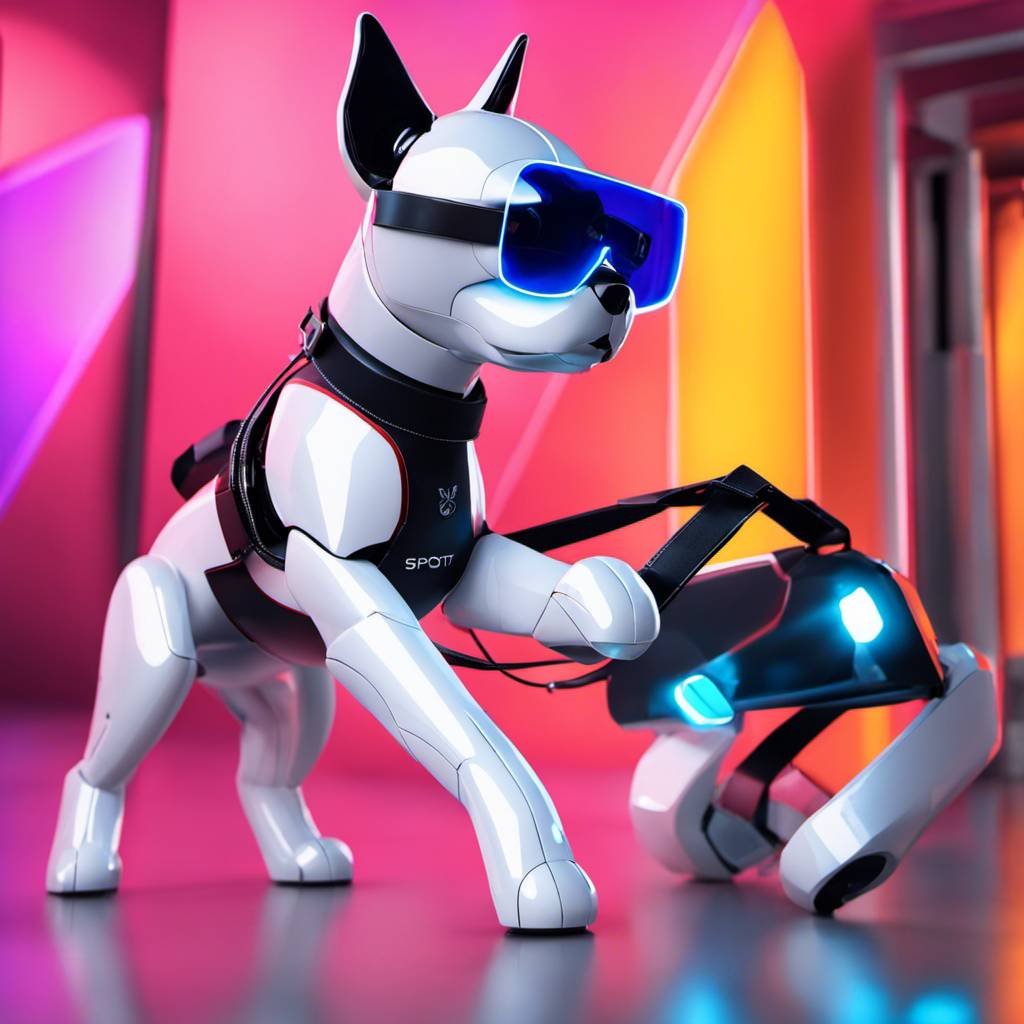In a pioneering move, researchers at Queensland University of Technology are transforming a headless, tailless robot dog named Spot into a guide dog for the visually impaired. This innovative project, driven by electrical engineering student Santiago Velasquez, has the potential to revolutionize assistance for those with visual impairments.
Velasquez, a guide dog user himself, was motivated by his own experiences to bring about a significant advancement in the field of assistance animals. He explained the challenges of international travel with a guide dog, citing quarantine regulations and extensive paperwork as major hurdles. Additionally, there are issues related to the animal’s wellbeing, such as potential paw burns during summer walks.
Spot was originally designed for deployment in the oil and gas industry, intended for use in hazardous environments unfit for humans. Velasquez believes that with the correct programming and design, robots like Spot could help reduce waiting lists for guide dogs and provide assistance to those living in remote locations far from assistance animal organizations.
The electronics and computers involved in Spot’s design allow it to walk straight with precision, although turning can be somewhat jerky due to its rigidity. However, it currently lacks the ability to identify obstacles and will simply stop unless human intervention occurs.
Despite these limitations, Velasquez sees great potential in robots as guide dogs. He said, “Dogs are perfect creatures, but we cannot ignore the increasing levels of automation in everyday life.” He pointed out how smartphones replaced cameras, radios, and TVs for most people within just two decades. Similarly, he sees a future where robots complement guide dogs, not replace them.
However, achieving this requires robots to replicate what dogs do naturally. For instance, even untrained dogs can distinguish between a green pole and tall green grass. When trained as guide dogs, they know to follow the footpath even when grass is present.
Five visually impaired individuals have already provided feedback on Spot as part of the research. They expressed a desire for Spot to move faster and more smoothly. Velasquez emphasized the importance of involving those with lived experience from the beginning to avoid costly mistakes later.
Robotics professor Jonathan Roberts sees robotic guide dogs as a game-changer for those with visual impairments. He explained, “The beauty of a robot guide dog is once you’ve programmed it, you can transfer the knowledge from one trained robot guide dog to others.” This eliminates the need for constant retraining as you can simply copy and paste the programming.
Roberts also suggested that international travelers could pick up a reprogrammed robotic dog at their destination, bypassing the need for quarantine. However, he cautioned that this is not a short-term solution and estimated that it could take 15 to 20 years before a robot like Spot could be used as a guide dog.
While this technology holds promise, Jason McKee of Guide Dogs Queensland believes it will never replace the service provided by trained animals. He said, “Nothing will beat the companionship, the intuition of the dog, then be able to forward think, see ahead and then make the early movements to guide someone safely.”
Guide Dogs Queensland breeds and trains their dogs specifically for service at a cost of $50,000 for the first two years of their lives. Only about 40% of puppies bred have the right qualities to graduate the program.
Despite the potential of robotic guide dogs, Velasquez stressed that his own guide dog, Trey, could never be replaced by a robot. He said, “A regular guide dog does so much more than just guide a person. They’re an animal, they’re a little friend, they keep you company.” As we continue to advance in electronics and coding, it’s clear that while robots can complement our lives in many ways, they cannot replace the emotional bond between humans and their animal companions.
